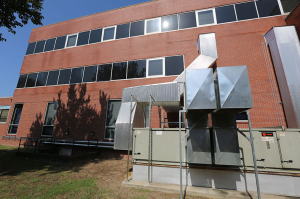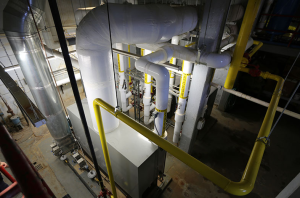
“We’re pleased that we can provide a more comfortable environment for patients and a more satisfying workplace for physician and staff,” says Nick Lewis, CEO at Hardin Medical Center. “It’s even better that the improvements generate significant energy and operational savings each year and that we were able to fund them through a performance contract without any capital outlay.”
In recognition of the hospital’s commitment to energy and operational efficiency and sustainability, Trane, a global provider of indoor comfort solutions and services and a brand of Ingersoll Rand, presented the hospital with the “Energy Efficiency Leader Award.”

Improvements to Hardin Medical Center were completed in 2012 to replace aging and outdated systems and improve the environment of care, especially in the labor and delivery area. Hardin funded the improvements with a performance contract, which allowed the health-care facility to use future energy and operational savings to finance the infrastructure improvements up front. Performance contracting is a funding option that provides measurable business results to support strategic objectives.
Prior to undertaking the improvements, leaders at Hardin Medical Center completed an environment of care study to identify ways to increase patient comfort, physician and staff satisfaction and the hospital’s bottom line. They also used building information modeling to create an energy model of the entire facility, which was used to evaluate various energy conservation measures.
Based on the results of these two studies, leaders identified upgrades that would best meet their needs. The energy savings identified proved significant enough to cover the cost of a new labor and delivery heating, ventilation and air conditioning (HVAC) system to provide reliable temperature and humidity control for the labor and delivery area.

New heating and domestic hot water boilers also are improving energy efficiency throughout the facility. Leaders also directed converting an electric equipment sterilizer to gas, which is less expensive than electricity. Retrofits also included more efficient lighting and low-flow plumbing systems to conserve water.

